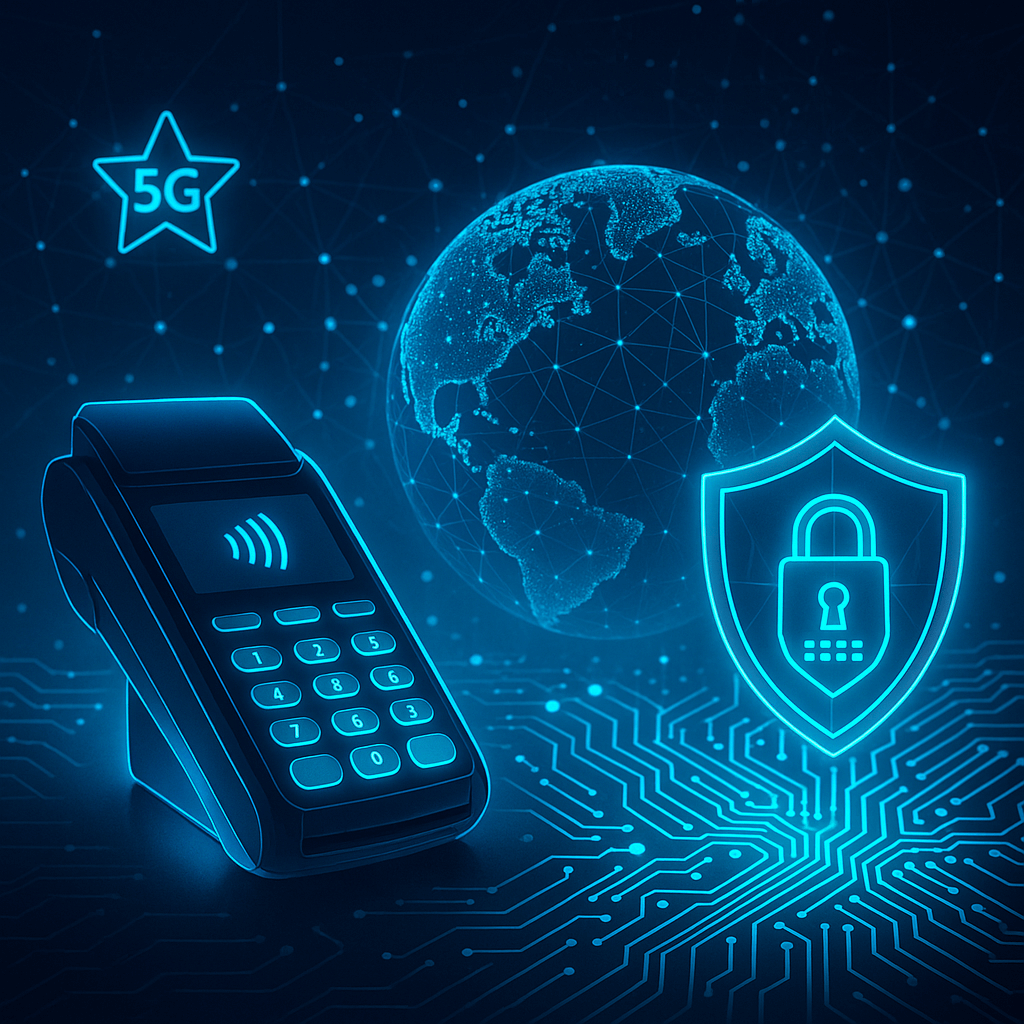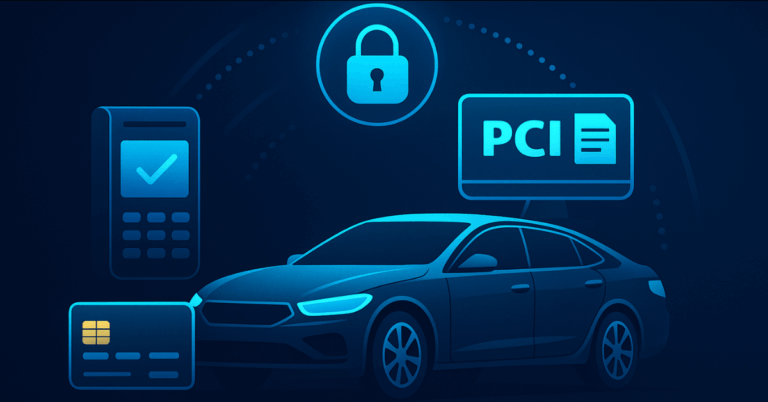5G & Edge Payment Security: Protecting IoT Terminals and Edge Nodes in Real Time

The payments industry is entering a new era. With the rollout of 5G networks and the rapid adoption of edge computing, consumers expect transactions to happen instantly—whether they are tapping a phone at a kiosk, paying for fuel with a connected vehicle, or checking out through a smart vending machine. These advances promise speed and convenience, but they also introduce 5G security risks and edge computing vulnerabilities that attackers are already learning to exploit.
For businesses processing cardholder data, the challenge is clear: how do you leverage the advantages of 5G and IoT without opening the door to fraud and compliance failures?
Understanding 5G and Edge Computing in Payments
5G brings high bandwidth and ultra-low latency, making near real-time communication between IoT payment terminals, banks, and cloud platforms possible. Edge computing complements this by shifting processing power closer to the transaction point.
This combination reduces lag, increases scalability, and enables use cases like biometric authentication at kiosks or mobile checkout in high-traffic environments. But as transaction data travels across thousands of distributed devices and edge nodes, visibility decreases, and the attack surface expands.
5G Security Risks and Edge Computing Vulnerabilities in Payment Systems
1. Expanded Attack Surface on IoT Terminals
Risk: Each new connected terminal is a potential doorway for attackers. Unpatched firmware, weak authentication, and default configurations expose sensitive payment data. Attackers have already used compromised IoT devices in botnet attacks like Mirai, and payment terminals represent an even more lucrative target.
How It Works: A criminal gains access through outdated firmware or stolen credentials, then installs malware to skim cardholder data or pivot into broader networks.
Mitigation Measures:
- Enforce strict identity verification and certificate-based trust for every device.
- Automate firmware and patch management.
- Segment IoT terminals from corporate IT environments.
2. Edge Node Exploits
Risk: Edge servers that process transactions locally are attractive to attackers because they handle sensitive payment data before it reaches centralized systems. A single compromised edge node could allow for large-scale interception or manipulation of transactions.
How It Works: Attackers exploit weak access controls to compromise an edge node, then exfiltrate unencrypted payment data or inject fraudulent transactions into the stream.
Mitigation Measures:
- Encrypt all data in transit and at rest.
- Deploy intrusion detection and threat-hunting capabilities at the edge.
- Schedule continuous vulnerability scanning and penetration testing for distributed infrastructure.
3. 5G Network Slicing Vulnerabilities
Risk: 5G allows “network slicing,” where multiple virtual networks run on shared infrastructure. If a slice is misconfigured or compromised, attackers could move laterally between environments.
How It Works: A misconfigured slice hosting IoT devices allows attackers to bypass segmentation controls and access sensitive payment traffic in another slice.
Mitigation Measures:
- Apply Zero Trust segmentation policies to every slice.
- Use SIEM tools and SOC monitoring for anomaly detection.
- Validate slice isolation through regular penetration testing.
4. Real Time Fraud and DDoS Attacks
Risk: The speed of 5G empowers criminals to launch high-volume denial-of-service attacks or automate fraud attempts that overwhelm systems in seconds. Fraudsters are also leveraging AI to generate convincing synthetic identities and manipulate transaction flows.
Mitigation Measures:
- Integrate AI-powered fraud detection and behavioral analytics.
- Employ DDoS protection services with automated failover.
- Establish incident response playbooks to minimize downtime and loss.
PCI DSS 4.0.1 and 5G Payment Security
The PCI DSS 4.0.1 standard reinforces many of the controls needed in a 5G and edge environment:
- Requirement 6.4.3: Organizations must authorize and monitor all scripts in consumer browsers, preventing client-side manipulation of payment flows.
- Requirement 11.6.1: Automated tools must detect unauthorized modifications, crucial for fast-changing IoT and edge environments.
- Continuous Vulnerability Management: Quarterly ASV scans, and ongoing internal testing ensure compliance and reduce the chance of missed vulnerabilities.
Failing to comply does not just risk data breaches—it can result in fines, reputational damage, and the loss of merchant processing privileges.
Best Practices for Businesses Securing 5G Payment Systems
- Conduct Continuous Vulnerability Scanning – Regular ASV scans, and internal testing identify weaknesses before attackers do.
- Enforce Strong Identity and Access Controls – Require MFA and certificate-based trust for every device and edge node.
- Apply Firmware and Patch Management – Automate updates to close known gaps across IoT payment hardware.
- Leverage SOC and SIEM Monitoring – Maintain real-time visibility across distributed systems with 24×7 monitoring.
- Perform Regular Penetration Testing – Validate defenses against evolving threats, including AI-driven exploits.
The Future of Edge Payment Security
As 5G and IoT adoption accelerate, payment ecosystems will continue to evolve. Looking ahead:
- AI-Powered Fraud Prevention will scan millions of transactions in real time to detect anomalies.
- Secure Hardware Modules in IoT Terminals will safeguard encryption keys and transaction data.
- Post-Quantum Cryptography will become essential as quantum computing advances threaten traditional encryption.
Organizations that invest in proactive security strategies today will not only remain PCI compliant but will also strengthen customer trust in a highly competitive payments landscape.
Final Thoughts
5G and edge computing are transforming payment systems into real-time, distributed ecosystems. But with innovation comes risk. Attackers are moving just as quickly, exploiting IoT devices, edge servers, and 5G vulnerabilities to target sensitive payment data.
By implementing continuous vulnerability scanning, Zero Trust access controls, SOC monitoring, and alignment with PCI DSS 4.0.1, businesses can confidently adopt 5G payment technologies while maintaining the security and compliance their customer’s demand.


